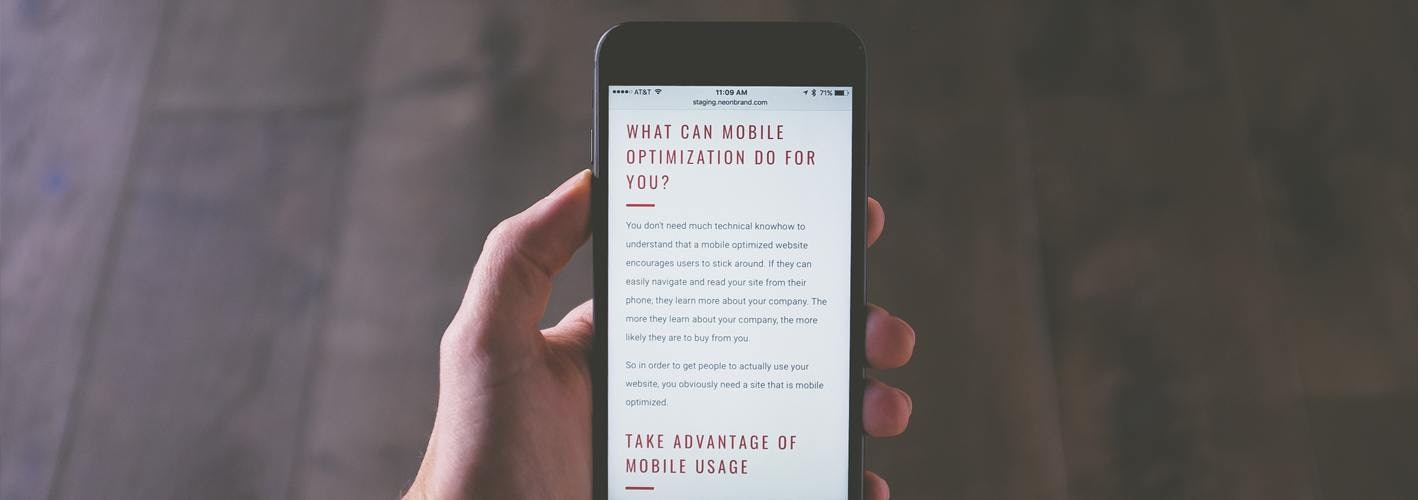One of the worst things in the world for a business is an unattractive, stale web presence. Now more than ever, an appealing web presence is imperative. The reality is that’s just where people’s attention is focused today. Print and other traditional avenues of marketing are still viable, but digital mediums are the linchpins of modern marketing—your website has become the new storefront, and it’s often the first thing a future customer is going to see.
That being said, every business doesn’t have an expertly built site. Despite the importance of your web presence, poorly executed websites, social media, and digital advertising are still far too common. This reflects badly on a company, making them come off as stale or out of touch.
Don’t let that happen to you. In this blog, we want to explore the four critical parts of your online aesthetic, as well as some ways you can maintain—or gain—visual freshness so your “storefront” makes visitors want to come inside.
Typography: Hierarchy and Structure
The way information is laid out on your site is extremely important. It needs to be done in a way that is visually pleasing and engaging, while still making your intentions clear. Hierarchy is a term used in the design world that describes level priority for the information on the page. Good typography purposefully takes the eye on a journey, starting with the most important relevant information and flowing on toward ancillary information.
Ornate and overly detailed fonts are usually best used for grand titles or call-to-action graphics, since they’re the most important things on the page. A nice, clean, basic font is best for your body copy. In short, you don’t want it to be a painful experience to digest your content. Make it as easy as possible.
How does the type flow on your website? Is it clear what visitors should read first? Is there ever a struggle to fully understand what you’re trying to say? Clear, well-designed typography allows a marketer to directly communicate the ideas of a website, keeping the end user engaged and informed.
Color: Contrast and Pop
This can end up being pretty subjective in some ways, especially considering what your brand color palette might be. The rule of thumb is to, at the very least, make sure your text is laid out against a color or image with a high enough contrast in comparison to the font color to maximize legibility. Usually what works best is a white font color over a darker image, flat color, or texture; or a dark-colored font over a lighter image, flat color, or texture. You want to use warm or loud colors (such as bright red, yellow, or neon-type colors) sparingly. You can maybe use them as accents, or hero imagery. There are some exceptions, but you still want to be careful and tactful because those bright colors could result in eye strain for the end user.
And then there’s the other end of the spectrum. You want to be careful to avoid overusing dull colors (greys, beiges, browns, tans, etc.). It can make your site look boring, dreary, and mundane—meaning your business looks that way, too. These colors are best used sparingly. You can usually balance them out with pops of cool (blues, teals, purples) and warm palettes. Basic black and white are usually safe and can help aid any design, whether they’re used for background or type colors.
Take a look at your own website. Which colors are the most prevalent? What sticks out to the eye? Or does everything sort of blend together? Your color aesthetic allows your marketing the opportunity to really direct the eye in a pleasing way—make sure you’re using it to your advantage.
Layout: Priorities and Organization
The same rules apply as for typography. You want to lead the end user’s eye on a journey throughout your web page and your whole site based on the level of priority. A good design uses the combination of imagery and typography to compartmentalize information in a pleasing and engaging way, while also assisting your end user along this visual journey. It shouldn’t be a struggle to figure out where you should start and where you should end up.
You also don’t want to lead off with a huge block of text. Your user should be greeted with something grand and enticing to lock in their interest upon first entering your site. Something like a giant, beautiful image that’s relevant to the contents of your site. Or maybe a well-designed short sentence telling who you are and what your story is, and/or what a prospective visitor might be looking for. In most cases you’re going to want both.
I would think of your home page as the preview to a movie. You want to wow them just enough to keep them engaged. Save your walls of text for your other pages, like an about section or your FAQs. And even with pages deeper within your site that contain larger amounts of content, an intelligent layout makes consuming content a much more enjoyable experience.
On your site, how are things laid out? Is the information organized? Does the user feel bombarded by graphics and information? Do different pieces of information feel like they’re all fighting for your attention at once? For the marketer, having easily digestible, self-explanatory layouts ensures that the end user is well informed on your product or service, increasing the chance of a transaction.
User Flow
The user flow is a literal journey the user takes through your site, from the home page to becoming a lead by providing their contact information or even possibly purchasing from you. Depending on the type of person (or persona) venturing through your site, you may want them to end up at different places. A well-planned and designed user flow keeps all the potential “personas” of the user in mind. You have to think of every link, sentence, button, or image as a breadcrumb purposefully leading the persona to their end goal.
If these breadcrumbs are difficult to understand, they’re hidden, or they don’t stand out in any relevant way, you could lose the user—and a potential sale. Creating a clear path can be very simple. Providing a highly visible navigation, imagery, and calls to action that focus on the most prominent thing you’d like to sell will result in the most desirable outcomes.
The user flow is the foundation of your site. Have you ever received complaints about your site being difficult to navigate? How accessible is relevant information to your typical user? Does anyone ever feel “lost” when engaging with your website? For the marketer, a user flow that’s found lacking could result in a less-than-desirable experience, and missed opportunities with potential buyers.
UX Can Make or Break Your Aesthetic—and Your Business
The user experience (UX) of your website is one of the most crucial components of a successful modern business. It’s the first thing most people see when attempting to find information on who you are and what you’re about. First impressions are lasting and difficult to reverse if executed poorly. Work with your in-house designers to learn more about UX design, or consult the experts (that’s us!) to see whether you’re in good shape as you currently stand. If not, your website could be costing you a lot of money.





